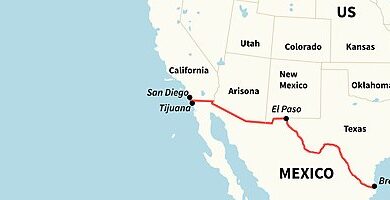California Tries Charging for Electricity Based on Income

In California, private sector innovation is giving way to public sector experimentation. From the state that pioneered special gasoline formulations, cap‐and‐trade, and natural gas bans, we now have income‐based electricity billing. While this idea may seem like a reasonable response to the problem of moderate‐income families being priced out of the state, a better approach would be to tackle the underlying causes of high energy prices.
A 2022 state law instructed the California Public Utility Commission (CPUC) to replace a flat monthly charge for the fixed costs of providing electricity with an income‐graduated charge. Californians with very low incomes already receive a discount on their fixed charges under the existing California Alternate Rates for Energy (CARE) program, but the new law requires at least three new levels. The state’s major utilities have proposed income‐based rate structures to CPUC. For the most expensive utility, San Diego Gas & Electric, monthly fixed charges would vary from $24 for customers under the Federal Poverty Level (FPL) to $128 for users earning more than 650% of FPL, which, in 2023, is $119,000 for a couple with no kids. So, on an annual basis, upper middle income energy users will pay $1248 more than those on the most modest incomes.
Implementation of this scheme will raise both fairness and privacy concerns. California and the federal government already have progressive income tax systems and benefit programs that redistribute income from higher to lower earners. Using discriminatory energy prices to further income redistribution begs the question of whether other prices should be manipulated for the same purpose. For example, should food and clothing prices also vary based on income? Further, the income‐graduated scheme will compel utilities to collect income and family size information from their customers, which some will see as invasive.
The income‐graduated charge is an attempt to offset the consequences of previous state policies that have made electricity expensive in the Golden State. As the accompanying charts show, retail electricity prices are far higher in California than those in other large states and in neighboring far western states. Rates per kilowatt‐hour (kWh) in California are double those in Texas, Arizona, Nevada, Idaho, and Oregon—states that are receiving many immigrants from the Golden State.
One contributor to the high cost of electricity in California is the Utility User Tax (UUT) levied by 156 cities and four counties across the state. This tax, which affects about half the state’s population, averages around 4–5% but can reach 10% in some extreme cases such as the Bay Area city of Richmond, which has relatively large shares of minority and low‐income residents. UUTs appear to be uncommon outside of California. Golden State local governments often seek new revenue sources to fund growing expenditures given Proposition 13’s limit on property taxes.
A bigger contributor to California high electricity costs is the state’s climate policies. For example, until recently, California required utilities to buy power from customers who have installed rooftop solar panels at the full retail price of electricity. As the Energy Institute at UC Berkeley Haas Business School explains, this level of compensation is excessive because it fails to take into account the many fixed costs that contribute to electricity prices. By overpaying solar customers, utilities redistribute costs to other, often poorer, consumers who may not be in a position to install home photovoltaic systems. The Energy Institute estimates that this policy has been adding three to five cents per kWh for San Diego Gas & Electric customers where the effect is most pronounced.
California utilities have also had to raise rates to fund wildfire mitigation efforts, especially after Pacific Gas & Electric was found liable for a series of deadly fires in Northern California. But the severity of California wildfires is often the result of the state’s poor forest management policies.
Finally, California is doing a poor job of balancing the supply and demand for electric power. The state is not permitting any new nuclear or gas‐fired power plants. Meanwhile, it encourages more electricity use by providing rebates on electric cars and phasing out new gasoline‐powered vehicles ahead of a ban in 2035. New wind and solar plants are insufficient to meet the state’s power demand. In 2021, the state imported 30% of its electricity. The need to buy power from out‐of‐state further increases energy costs.
It is not clear that California’s heavy handed climate policies are essential to reducing the state’s greenhouse gas emissions. The state is full of environmentally conscious consumers who are motivated to conserve, buy electric cars, and switch to solar power without the state’s carrots and sticks.
So instead of pursuing policies that drive up power costs and then worry about the distributional effects, state policymakers would be well served by finding ways to lower energy costs for everyone.





